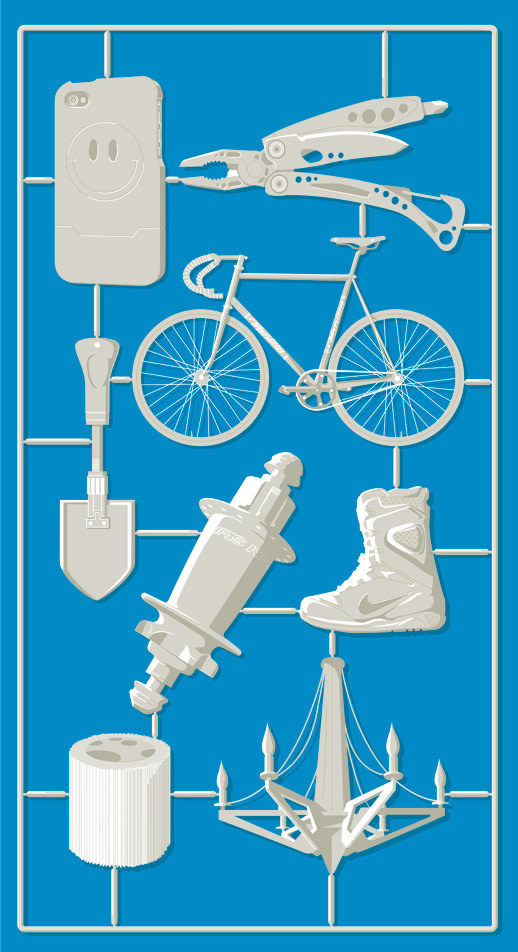ID-ing P-town

EXACTLY ONE year ago, local furniture builder Ken Tomita and custom engraver Joe Mansfield were just friendly Southeast Portland neighbors, “nerding out and talking about design,” Tomita laughs. But one shining moment of inspiration (and 12 months of tinkering) later, the duo’s Grove line of bamboo iPhone cases is a hot commodity nationally. “We get maybe 100 e-mails a day,” Tomita says.
Grove isn’t alone. In recent years, the Rose City’s designers have given form to an array of beautiful, functional things Americans use every day, from zip drives and keyboards to camp stoves and even Thortex artificial joints. (For more P-town-designed beauties, see our Lust List.)
In fact, Portland is shining a bright enough light to lure the Industrial Designers Society of America’s (IDSA) annual thinkfest here this month, when 700 attendees will listen to eggheads—half of them home-grown—wax philosophical on everything from electric cars to violins.
But does it signal Portland’s rise as a industrial design (ID) capital?
More like a cozy village. Credit Nike and Adidas for pouring the foundations. The dynamic duo have spun off dozens of firms, from Thomas Raymond & Co, a footwear studio staffed by alums of both companies; to Krown Lab, an ID shop created by former Nike TechLab Design Director Stefan Andrén; to Terrazign, a specialist in structural fabric design started by ex-Nike engineer Bill Dieter.
“It’s a truism of capitalism: there’s a cluster,” says New York City-based Julie Lasky, an editor at Design Observer and former editor of the industrial design bible, I.D. magazine. “Someone comes in, then they spin off and professional organizations rise up, creating community.”
Meantime, the University of Oregon has ramped up the academic side of things with a new, Portland-based program in Product Design, and the Portland Development Commission (PDC) is plotting a new $1.1 million materials library, the Portland Center for Design & Innovation, based on the model of Material ConneXion, a New York-based resource center where industrial designers and architects can learn about new materials. Mayor Sam Adams has requested $500,000 in federal funding for the center with aspirations of an October 2011 opening.
Sohrab Vossoughi—founder of Ziba Design, a local ID think tank with major clients (3M, Hewlett Packard, General Electric), and the perennial Portland cheerleader who helped bring the IDSA meet-up here—believes Portland is an emerging ID base. “We have a lot of idealistic, passionate, cause-driven people here,” says Vossoughi. On the best days, that translates to the kind of collaboration that produced Grove: “Half of my friends here are my competitors, technically,” says Tomita.
While all that warm-and-fuzzy creativity certainly offers a nice head start, a few spinoffs and a world-class design library do not make a Milan, Helsinki, or San Francisco, some of the acknowledged centers of ID. We can’t compete with the likes of California’s Silicon Valley, where nearby institutions like Stanford, Caltech, UCLA, and Berkeley deliver droves of hungry grads to the job market every year. (The U of O unleashed a mere 10 Portland product design grads this year, with future expectations of only 20 to 25 annually.) And unlike larger cities with major industry close by (Detroit) or boatloads of venture capital (San Francisco), or both, Portland hardly has the financial muscle to become an ID powerhouse. “The infrastructure isn’t that strong,” confirms Krown Lab’s Andrén.
Still, even small companies can mean big business. Andrén’s designs for a high-end line of headphones, Atomic Floyd, hit shelves in Europe’s Apple stores in 2008. Terrazign has signed a deal to design astronaut harnesses for NASA. Boothster, a new start-up, is designing and building eco-minded trade-show displays for clients like Google and Unilever in a Northeast Portland warehouse.
But as Portland awaits the chicken or the egg in its quest to be a serious center for ID, it remains a warm nest for a community that’s tight-knit and artisan-minded. “We don’t want to sell a million iPhone cases,” says Tomita of Grove, “or run big factories.” We’ll see.



